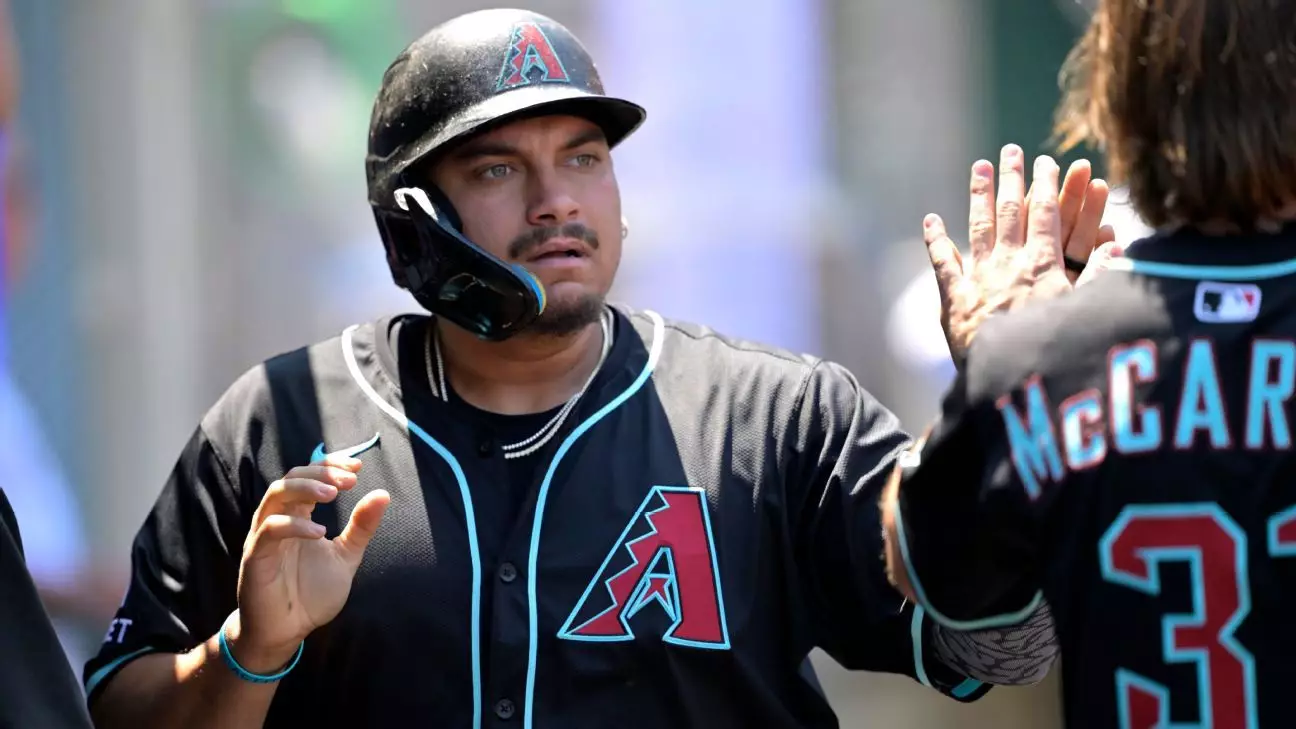In an era where the MLB trade deadline often serves as a battleground for competing visions, the Seattle Mariners took a decisive step forward with their acquisition of first baseman Josh Naylor from the Arizona Diamondbacks. This bold move signals a clear intent: the Mariners are committed to contending in the fiercely competitive American League West and pushing their franchise closer to postseason success. Rather than merely shuffling minor pieces, Seattle grabbed a player whose offensive production and composed approach at the plate could be the catalyst for a sustained push deep into October.
Adding Naylor to their roster not only enhances the team’s offensive firepower but also reflects an astute understanding of their needs. The Mariners recognize that consistent power hitting, coupled with disciplined plate discipline, can tilt the scales in tight playoff races. With Naylor’s proven ability to limit strikeouts, he offers a rare blend of power and contact — an asset that can stabilize and elevate their lineup during critical late-season encounters. The gamble here is not just about filling a roster spot but about transforming their offensive dynamics with a player who has experienced playoff atmosphere in the past.
Seattle’s decision to prioritize immediate impact while safeguarding their prized prospects underlines a philosophy that many teams falter at: balancing short-term gains with long-term stability. By acquiring Naylor and holding onto their top-tier prospects like Colt Emerson and Jonny Farmelo, the Mariners demonstrate a refusal to overspend recklessly. Instead, they strategically target players who blend current productivity with playoff experience, underscoring their vision of building a resilient, postseason-ready roster. Their focus is not just on making the postseason but on making noise once they get there.
Arizona’s Rebuilding Strategy: A Calculated Chamber of Comings and Goings
The Diamondbacks’ willingness to part with Josh Naylor exemplifies a broader organizational strategy driven by necessity rather than desire. Despite a surprising turnaround that saw them reach the World Series in 2023, Arizona’s current trajectory is marked by a conservative approach aimed at recalibrating their roster for future contention. The team’s core, featuring rising stars like Corbin Carroll and Ketel Marte, remains promising but also hints at the imminent departure of key pitchers such as Merrill Kelly and Zac Gallen.
Losing these pitchers to free agency could leave the team in a vulnerable position unless they reinforce their rotation through trades or internal development. The decision to trade Naylor — a player with a manageable contract and playoff experience — fits into a calculated rebuild phase. Arizona’s front office appears to understand that a full-scale rebuild may be necessary, especially considering their injury issues and current standing of 50-53. The intention seems to be to shed impending free agents while accumulating prospects that can fuel future runs, rather than risking a decline by overextending for short-term results.
This approach also involves strategic patience with their young pitchers like Ashton Izzi and Brandyn Garcia, both of whom possess high-upside potential but currently exhibit inconsistent results. By trading away veterans and being open to deals involving established players, Arizona signals a mindset focused on sustainability over fleeting success. Their pursuit of pitching prospects and willingness to part with experienced players embody a broader philosophy of retooling, emphasizing depth, versatility, and future assets over immediate gratification.
Implications for the Broader MLB Landscape
The trade between Seattle and Arizona is emblematic of a shifting paradigm at the MLB deadline, where teams are increasingly valuing sustained competitiveness over quick fixes. For Seattle, this deal reflects confidence in their young core and a strategic appetite for risk — prioritizing high-impact players like Naylor while safeguarding their prospect pipeline. Unlike previous years where blockbuster deals could decimate farm systems, the Mariners are illustrating restraint, choosing quality over quantity and aligning their roster with a clear postseason goal.
On the other hand, Arizona’s approach—consolidating their roster and focusing on future assets—demonstrates a maturity and strategic acumen that is often overlooked in the frantic deadline dust. While some may view their moves as a sign of a team in transition, the reality is they are playing the long game, understanding that maintaining flexibility and replenishing talent pools is essential for sustained success.
Furthermore, this trade highlights the importance of balancing star power with developmental potential in today’s MLB. The focus on prospects like Garcia and Izzi underscores the league’s current emphasis on building through depth and youth, rather than relying solely on big-name acquisitions. Teams that master this balance will be better positioned for consistent playoff appearances and eventual championships.
The Power of Targeted Acquisitions in Shaping Postseason Scenarios
The impact of acquiring a player like Josh Naylor extends beyond mere statistical contributions. It embodies a mindset shift, emphasizing calculated aggressive moves that seek to fill specific gaps in a roster. Naylor’s unique blend of power and contact ability could be the difference-maker in clutch situations during the playoffs, providing Seattle with a much-needed boost in offensive consistency.
Moreover, the focus on pitching depth with prospects like Garcia and Izzi demonstrates a recognition that deep postseason runs are often dictated by the quality and resilience of the starting rotation and bullpen. Implementing a balanced approach—adding proven hitters while cultivating a new generation of arms—could create a resilient and adaptable team capable of navigating the ebbs and flows of October baseball.
In a broader context, this deadline period is shaping up as a window where teams are not solely seeking immediate gains but are strategically building their future cores. The Mariners’ move encapsulates this philosophy: an aggressive, calculated step forward that could serve as a blueprint for other contenders. If executed correctly, this blend of veteran savvy, scalable prospects, and targeted talent acquisition offers a compelling recipe for postseason success and long-term competitiveness.
Note: This article is written from a critically analytical perspective, reflecting on the strategic nuances, potential impacts, and underlying philosophies shaping the recent trades and broader MLB trends.

